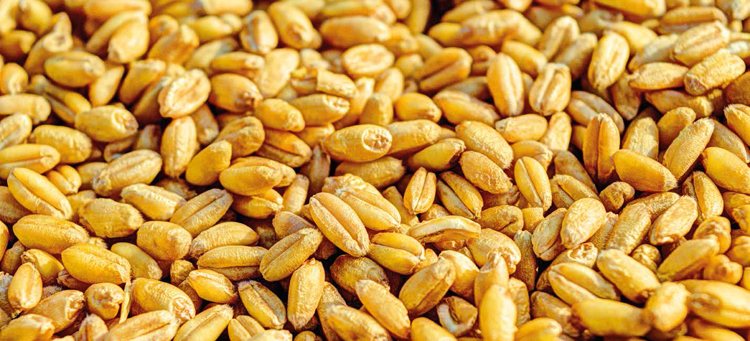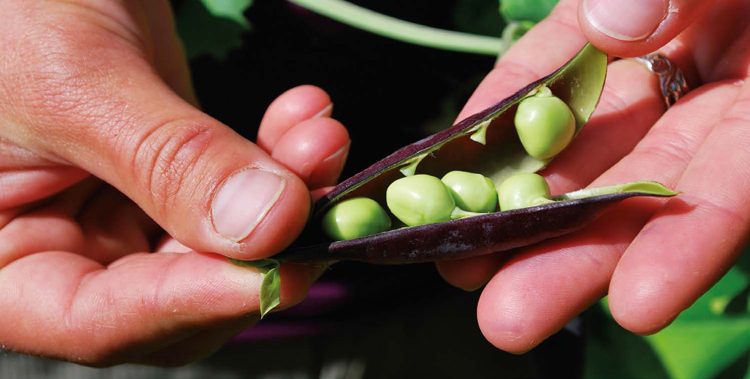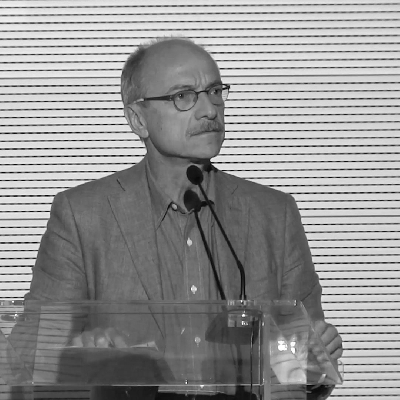Manifesto of the Green Economy on Agri-Food for Expo 2015
“Spreading Eco Innovation and Good Practices”
Promoted by
- Italian National Council for the Green Economy
Document available online
The green economy aims reducing and using resources in an efficient and rational way, according to a circular economy model. This model is also valid for renewable productions, such as agri-food, that are not unlimited and bear environmental and economic costs. Notwithstanding the remarkable progress in agricultural productivity, it would be irresponsible not to stop the waste of food and agricultural resources; in particular taking into consideration the continuous increase in world population and food consumption, as well as the factors of pressure and risks for the agricultural sector. Paradoxically, while part of the world population continues to suffer from hunger and malnutrition, another significant part is affected by obesity and wastes a large amount of food. To fight food waste, better information is necessary, as well as a sounder education on nutrition. More conscious and sober lifestyle and food consumption attitudes are required. It is also vital to apply a circular economy model to food chains, meant to actively prevent and minimise waste and losses in all steps: production, processing, packaging, storage, transport and distribution, all the waydown to final consumption. It is essential, in particular, to disseminate best practices and the best available techniques for the correct and sustainable use of all the by-products and derivatives from agricultural food production, and to recycle and recover all the remaining waste.
[…]
Environmental pressure on land is exacerbated by agro-industrial practices which are set on short-term and low-cost market strategies, pursue low quality productions, make use of harmful substances, degrade land and water resources and are incapable of recognising the economic values of natural capital and ecosystem services. Those practices, already called into question among agriculture experts, can eventually be overcome by promoting an agri-food green economy policy based on sustainable quality production – a true driving force of local cultures and economies – and by using media and communication to enhance awareness of its positive effects on environment, employment and general well-being. It is necessary to focus on well-grown land – without the open field use of genetically modified organisms (GMO) – and best practices backed up by a good level of know-how and information, and by a greater contribution from research and eco-innovation: best practices on organic farming, biodiversity, eco-sustainable quality production chains, restoration and conservation of plant and animal species, local products, land and cultural heritage.
[…]
Charter of Milan
“Managing Resources Equitably”
Promoted by
- Italian Ministry of Agricultural, Food and Forestry Policies
- Italian Ministry of Foreign Affairs and International Cooperation
- Italian Ministry of the Environment, Land and Sea Protection
- Italian Ministry of Health
- UNO – United Nations Organization
- FAO – United Nations Food and Agriculture Organization
- Chairman of the Steering Committee of the Commissioners of Participating Countries at Expo Milan 2015
- Italian Pavillion
- Workshop Expo – Giangiacomo Feltrinelli Foundation
- WE – Women for Expo
- Feeding Knowledge
- Observatory on Food Waste – University of Bologna
- Triulza Foundation
- Barilla Centre for Food and Nutrition
- Universities’ Scientific Committee for EXPO 2015 – Municipality of Milan
Document available online

[…]
We believe that
everyone has the right to have access to a sufficient quantity of safe, healthy and nutritious food, that satisfies life-long personal nutritional requirements and enables them to lead an active life;
food has a strong social and cultural value, and should never be used as an instrument of political or economic pressure;
the planet’s resources should be managed in an equitable, rational and efficient manner, so that they are not excessively exploited or used to benefit some people at the expense of others;
access to sources of clean energy is a universal right, for present and future generations;
investment in natural resources, particularly in land, should be regulated, so as to ensure and maintain access to these resources for local communities, as well as access to their sustainable use;
sound management of water resources, namely management that takes account of the relationship between water, food and energy, is fundamental to ensure the right to food for all;
agriculture is fundamental, not just for food production, but also for landscape design, environmental and territorial protection and conserving biodiversity.
We consider it unacceptable that
there are unjustifiable inequalities in the possibilities, capabilities and opportunities of individuals and peoples;
there is still no universal recognition for the fundamental role of women, especially in agricultural production and nutrition;
some 800 million people suffer chronic hunger, more than two billion people are malnourished or suffer deficiencies in vitamins and minerals; nearly two billion people are overweight or suffer from obesity; 160 million children suffer from malnutrition and stunted growth;
each year, 1.3 billion tonnes of food produced for human consumption is wasted or lost in the food supply chain;
more than 5 million hectares of forest disappear each year, resulting in grave damage to biodiversity and local communities, and serious impact on the climate;
marine resources are excessively exploited: more than 30% of what is commercially fished is exploited beyond any capacity for regeneration;
natural resources, including land, are used with disregard to the needs and expectations of local communities;
energy poverty continues, specifically in the form of lack of or inadequate access to efficient energy services and cooking facilities that are affordable, and that neither pollute nor damage health.
Charter of Bologna against Food Waste
“Introducing Measurable Targets”
Promoted by
- Italian Ministry of the Environment, Land and Sea Protection
- Department of Agri-Food Science and Technologies of the University of Bologna
- Technical and Scientific Office of the National Prevention Plan for Food Waste
Document available online

[…]
Whereas
Approximately one-third of all food produced for human consumption is lost or wasted at global level which amounts to about 1.3 billion tons per year;
At the same time more than 800 million of people around the world are still chronically undernourished and roughly 1 billion people do not have adequate access to drinking water; [...]
According to FAO the food we waste every year on a global scale requires roughly 250.000 billion litres of water, 1.4 billion hectares of land and is responsible for 3.3 billion tones of carbon dioxide emitted in vain into the atmosphere;
The economic costs of this food wastage are substantial and amount to about USD 1 trillion each year. However, the hidden costs of food wastage extend much further;
The demand for food is expected to increase by over 60 percent over the next 40 years, as the global population reaches over 9 billion and as increased income drives dietary pattern changes towards more livestock products. The agriculture sectors (including forestry and fisheries) are also required to produce more non-food products, especially for energy (liquid biofuels, wood) and feed.
At the same time, the resource base of the agriculture sector is threatened by environment degradation, climate change, loss of biodiversity and ecosystem services and, particularly in certain areas, urbanization and industrial use.
Acknowledged that
International competition for access to water, energy, land and food will lead more and more to intergeneration tensions and/or conflicts.
For future population scenarios, food wastage mitigation could play a crucial role both in reducing agriculture’s environmental footprint and assuring food availability while respecting critical planetary boundaries.
Reducing food losses and waste is a global challenge; a global coordination is needed to join efforts and actively tackle the problem at international level with appropriate measures;
We, the governments, pledge ourselves to
1. Include the problem of food losses and waste (FLW) within the international environmental agenda;
2. Adopt a common, legal and clear definition of FLW and a common metrics to quantify it, according to the outcomes of the main international projects on the issue;
3. Convene an inclusive process to identify hotspots, causes of losses and waste at different levels, potential solutions and levels of intervention. This requires identifying the actors who will directly implement solutions, individually or collectively, identify the costs they will bear, as well as potential benefits and beneficiaries. It also requires identifying constraints (including systemic constraints) and how they would be addressed (infrastructure, technologies, changes of organization in the food chain/system, capacity building, policies and institutions);
[...]
6. Set measurable National FLW reduction targets along the food supply chain;
[...]
Terra Viva
“Biological Agriculture Can Save the Climate”
Promoted by
- Navdanya International
Document available online

The new agriculture that the world needs integrates several elements of peasant agriculture and ages-old farming practices with the latest knowledge from ecological sciences. Agroecology and regenerative agriculture is today emerging across the world as an alternative to industrial agriculture. It radically differs from the dominant type of industrial agriculture based on fossil fuels and chemicals which is extractive in two ways: it is based on oil and its result is the robbing of fertility from the soil.
The new agriculture is strongly grounded on healthy and living soils. The fertility of the soil is well-cared-for and helps considerably in reducing the dependency on fossil fuels. It is also an ecologically intensive and productive agriculture. The intensity of production is not built on an elevated use of external inputs but is rooted instead on diversity, multiple cropping, rotation, mulching and well coordinated agronomic cycles that combine soils, crops and animals into a balanced whole. The making of good manure is an essential ingredient, just as breeding and selection help to adjust plants and animals to local conditions, thus securing an optimal fit of all resources.
[...]
The new agriculture is basically self-provisioning. The main resources needed for production are produced and reproduced within the farm itself or at the level of the rural community. This applies especially for energy. Instead of being a net importer of energy, the new agriculture produces energy. It also helps to cool the planet. Instead of contributing to the emission of greenhouse gases (as previously said, some 25% of all greenhouse gases on the globe comes from industrial agriculture), it helps to sequestrate carbon. Enriching soils and strengthening soil biology help to fix carbon dioxide and simultaneously reduce the need for chemical fertilizers.
[...]
Research across the world has shown that organic farming increases carbon content of soil, making the soil the biggest carbon sink and the biggest water reservoir. With average potential of removing 2 tonnes of carbon dioxide per hectare every year, organic farming has the potential of sequestering 10 Gigatons of carbon dioxide, which is equivalent to the amount needed to be removed from the atmosphere to keep atmospheric carbon below 350 parts per million, and average temperature increase at 2 degrees centrigade.
[...]
At the global level, the new agriculture, based on intensification of local recycling of nutrients through crop-livestock integration locally represents an end to some of the major imbalances that currently characterize world agriculture. In this respect an example is the large extraction of nutrients from the soils of Argentina, or from the Cerrado in Brazil for growing soybeans, that are then exported to Europe as animal feed for factory farms where there is an overproduction of manure that pollutes the land, water and air.
Another major imbalance is in the use of fertile arable lands for the production of grains to feed cattle (located in enormous feed lots), while at the same time large grassland areas in hills and mountains lay idle. Also, 70% of the poor of this world are rural people who are linked, in one way or another, to agricultural activities. In stark contrast with this massive rural poverty there is the huge wealth accumulated in large food empires. Finally, another imbalance is the unequal distribution of food production over different countries and different regions.


